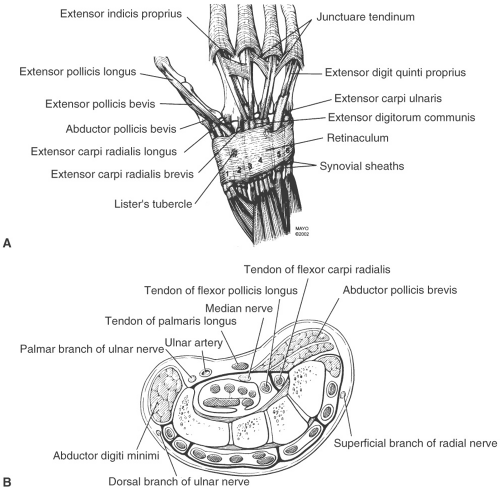

3 Thickening of the tendon sheath and therefore narrowing of the tunnel occurs because of the presence of fibrocartilage, which is a response to the shear and compression forces placed on the tendons. 4 This tunnel lies over the radial styloid and under the extensor retinaculum, which can cause tendon gliding difficulties and entrapment of the tendons when thickening of the sheath occurs. They lie within a closed fibrous sheath or tunnel with a synovial lining 3 that is approximately 2.2 cm in length. The first dorsal compartment comprises the extensor pollicis brevis (EPB) and the abductor pollicis longus (APL) tendons. 1 The extensor tendons are divided into six compartments as they cross the dorsum of the wrist. The pathophysiology of De Quervain’s tenosynovitis is generally defined in the literature as a stenosing condition of the first dorsal compartment.

While the exact cause of De Quervain’s tenosynovitis is still debated, possible aetiologies include acute injuries (eg blunt trauma, biomechanical compression), forceful repetition of the wrist and thumb leading to increased frictional forces or microtrauma (eg workplace-related activity, actions performed by new mothers), inflammatory diseases, anatomical variations, abnormalities of the first dorsal compartment and, rarely, pathogens. 1 The prevalence of De Quervain’s tenosynovitis in adults of working age (18–65 years) in the general population is approximately 1.3% of women and 0.5% of men, with peak prevalence at the age of 40–60 years.

While there are many reasons for radial wrist pain, De Quervain’s tenosynovitis is a common pathology and is described as stenosing tenosynovitis of the tendons within the first dorsal compartment of the wrist.


 0 kommentar(er)
0 kommentar(er)
